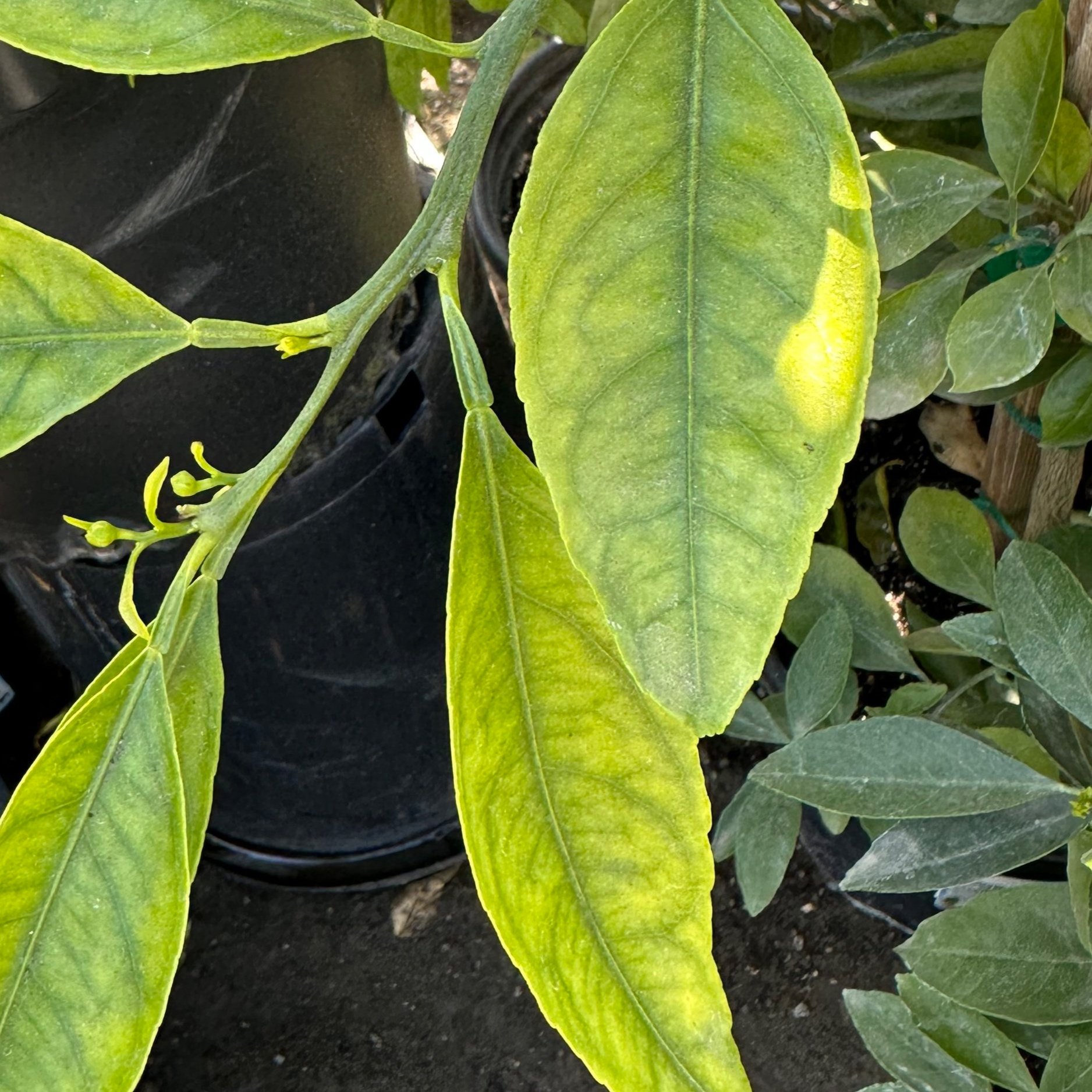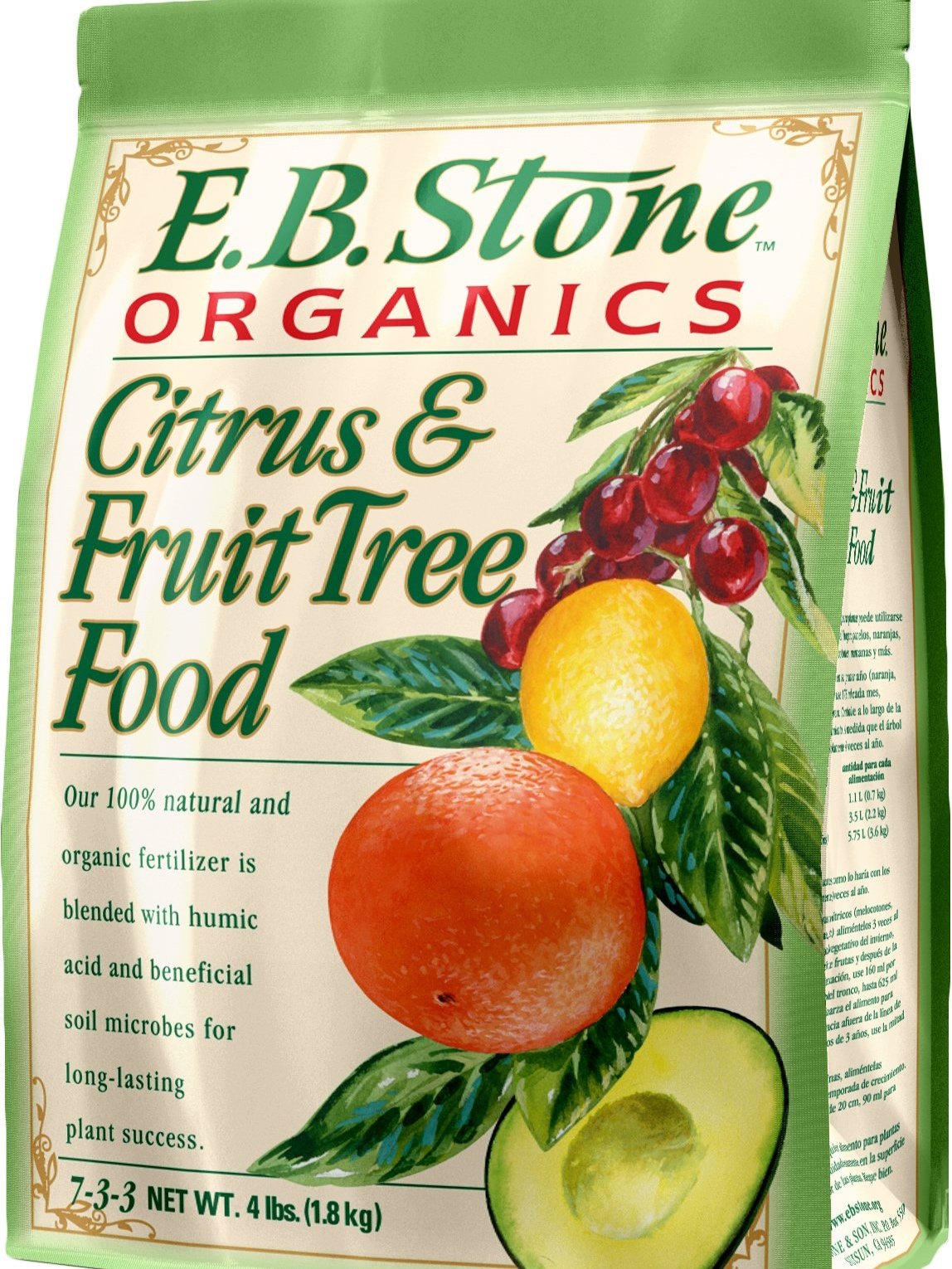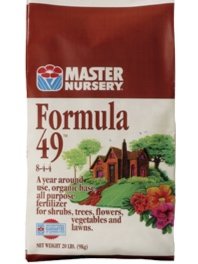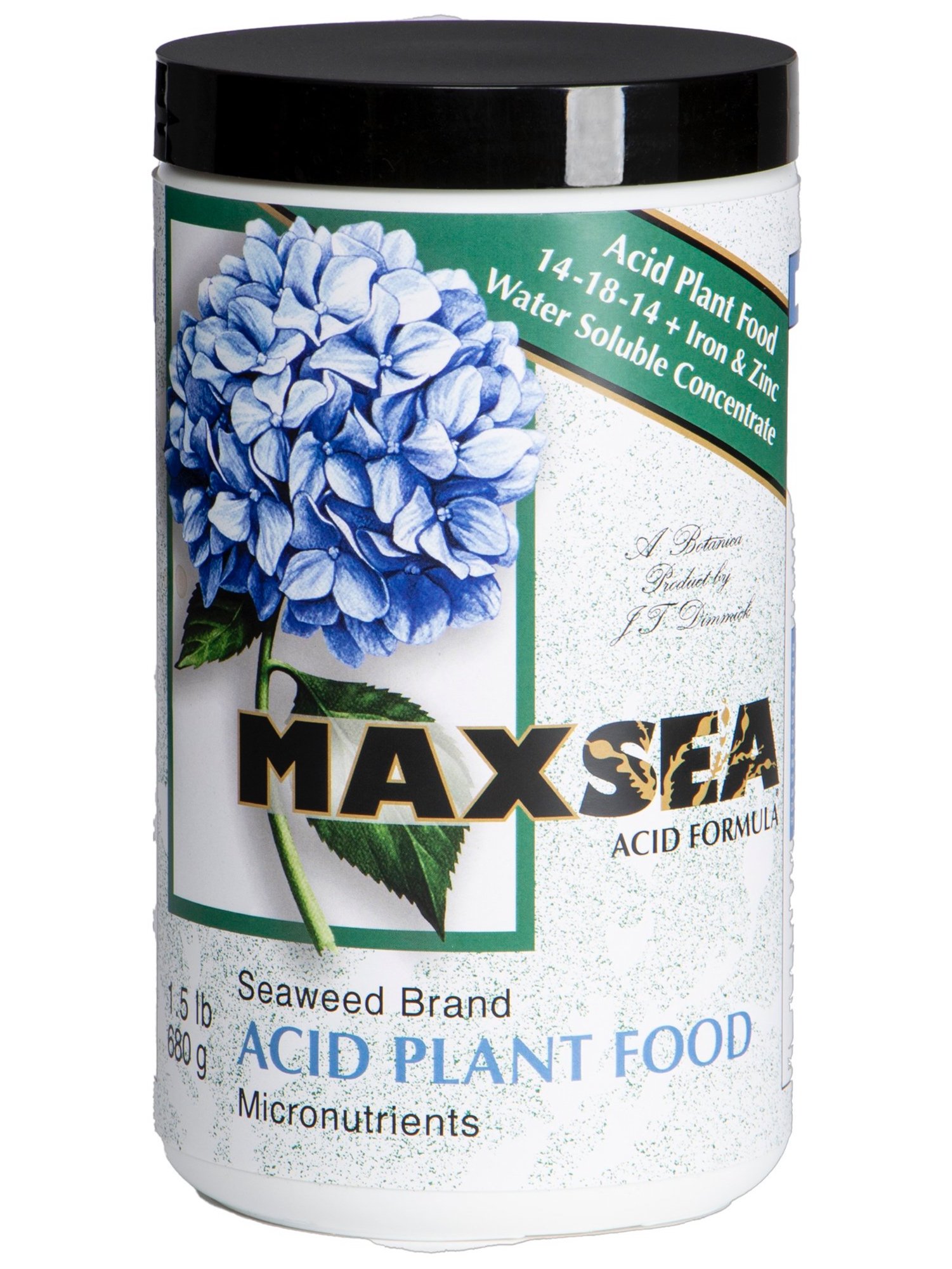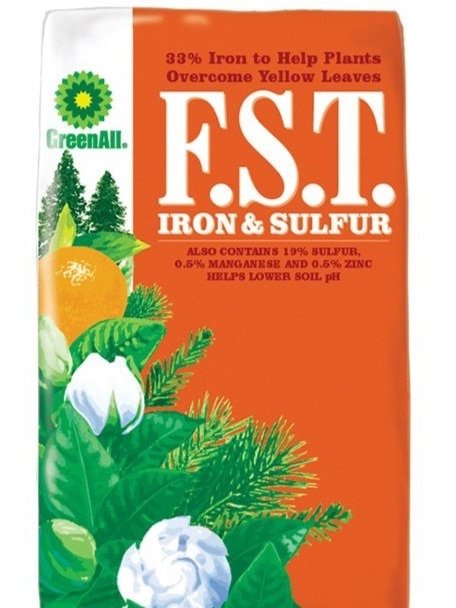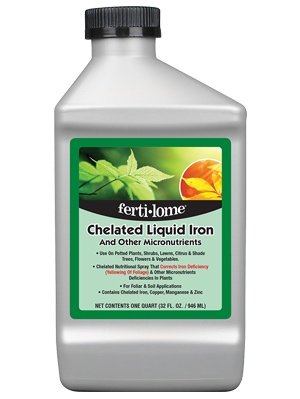Citrus - Managing Yellow leaves
Fertilizing Citrus
Citrus are heavy feeders and in order to thrive, they require regular fertilization. An abundant supply of nitrogen and micronutrients help them maintain a rich green color and produce to their potential. We recommend a fertilizer labeled for citrus or one with a formulation similar to the list below.
We recommend: *
· Citrus & Fruit Tree Food (7-3-3) by E.B. Stone Organics
· Citrus Food (12-8-4) by Master Nursery
· Formula 49 (8-4-4) by Master Nursery
· Maxsea (14-18-14) + Iron & Zinc by J.T.Dimmick (recommended for containers)
A deficiency of micronutrients such as iron or zinc may present as chlorosis (yellowing) of the leaves. Use caution when diagnosing, as overwatering can result in chlorotic leaves as well. Some elect to address this deficiency in fall through the application of a granular acidifier with micronutrients such as F.S.T. Iron & Sulfur by GreenAll. In Spring, you may choose to do a foliar feed through a product such as Chelated Liquid Iron by Ferti-lome.
In the Bay Area, start fertilizing with a citrus fertilizer when the weather warms up in March, just prior to bloom, then continue every six weeks until the end of August. Some elect to fertilize monthly by applying a proportionally reduced amount. Monthly applications will increase the number of feedings to 6 rather than 4, so decrease the recommended amount applied by 33%. This more frequent method is an effective strategy for container plantings. When feeding plants in the ground, spread the fertilizer evenly along the edge of the tree’s leaf canopy. Water the tree thoroughly after the application of fertilizer. After trees are three years old, fertilize only in February, May and August.
Deep, infrequent watering is crucial for citrus. Water young trees once a week deeply, add a second watering during times of excessive heat. During periods of unusual heat, established citrus would also benefit from an additional light watering or hosing down the foliage in the morning. For plants that are four to five years old, you can reduce the watering schedule to twice a month if you use a long slow penetrating watering technique. Prior to a cold snap, ensure your trees are well watered. Drought stressed trees are more susceptible to frost damage.
Container plants typically need watering once or twice a week depending upon the size of pot and the maturity of the plant. Adjust the amount and timing of your applications to ensure the soil dries out between waterings. Maxsea (14-18-14) is an excellent fertilizer for containers.
* Note: As with all chemical treatments, please read the instructions thoroughly before application.

